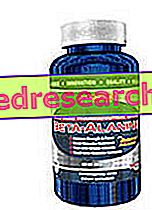Generality
Gin is an alcoholic beverage among the most known, used and marketed in the world. The high alcohol content, which by law must not be lower than 37.5% Vol., Ranks it among spirits products.

The noun "gin" comes from the French "genièvre" and / or from the Dutch "jenever" and / or from the Italian "ginepro".
The real discovery of gin is attributable to Franciscus Sylvius, a Dutch physician, who in the 17th century AD tried to formulate a cure for indie colonizing soldiers. Towards the end of the 17th century, its production mainly characterized the United Kingdom, following the protectionist intervention of William III of Orange. For a long time, gin represented a real currency of exchange; she was so responsible for a certain social decadence (alcoholism and poverty).
Types of Gin and Current Legislation - January 2014
Although many types of gin have differed, according to current EU legislation they can all be grouped into four categories
- Juniper flavored alcoholic beverages: characterized by moderate intensity fermentation and subsequent distillation with aromas to extract the aromas. They have a minimum of 30% ABV (Alchol By Volume - volume in alcohol or "vol.") And can also be marketed under the name of Wacholder or Genebra.
- Gin: these are aromatic alcoholic beverages NOT produced by redistillation of aromas, but with the addition of natural flavoring substances to neutral alcohol of agricultural origin. The predominant flavor must be juniper.
- Distilled Gin: it is produced only by redistillation of ethyl alcohol of agricultural origin, initially concentrated at 96% (water and ethanol azeotrope) using the TRADITIONAL stills; juniper berries and other natural flavors are used, as long as the former is predominant. If produced by adding only essences and aromas to alcohol of agricultural origin it is NOT distilled gin.
- London Gin: it is obtained from ethyl alcohol of agricultural origin with a maximum methanol content of 5g per hectolitre at 100% ABV; the aroma is given exclusively by the redistillation of ethyl alcohol by traditional stills, in the presence of all natural aromas. The final distillate must have at least 70% ABV and cannot contain more than 0.1g of added sugars per liter of product, nor dyes, nor other ingredients other than water. It is also called "Dry London Gin".
Within the European Union, the minimum alcohol content in the various bottles of gin (gin, distilled gin and London Gin) is 37.5% ABV.
In the United States of America gin is defined as an alcoholic beverage with at least 40% ABV (80 proof) with a typical juniper flavor; gin produced only with distillation or redistillation, in the presence of aromas with alcohol washing, can be further differentiated and marketed with the name of "distilled gin".
Other legal classifications distinguish gin based on the geographical area of origin, without further characterization (eg Plymouth gin, Ostfriesischer Korngenever, Slovenská Borovička, Kraški Brinjevec, etc.); there is no lack of references to classical styles, which are culturally recognized but not legally defined (eg gin, Wacholder and Old Tom gin).
Production
From its origins, there are many production methods that have become detached from the traditional process; mostly, they use modern techniques aimed at the distillation and flavoring of the drink.
As a result of this evolution, gins can be classified into three types of processing:
- Pot Distilled Gin: it is the first style of gin and is obtained by distillation of fermented must of: wheat or barley or (to a lesser extent) from other cereals; this "malt wine" is then redistilled with vegetable aromas. In this way it is also possible to produce a double gin, or a gin redistilled twice with the aromas. Using traditional stills, the alcohol content remains quite high (around 68% ABV for a single gin and 76% ABV for a double gin). These gins are often aged in wooden barrels that enhance the malt taste, making them more like a whiskey. Kornwijn and Ginevra Gin are the most important in the category.
- Column Distilled Gin: born with the invention of the Coffey style; it is made with a first distillation with a high alcohol content (96% ABV) of neutral alcohol from fermented must, which uses the backwash reflux of a special column. The fermentative base for alcohol can be cereals, sugar beets, grapes, potatoes, sugar cane, sugar, etc. (provided of agricultural derivation). Alcohol (very concentrated) is then distilled with juniper berries and other natural flavors in another instrument. Very often, instead of being immersed, all the aromatic components are placed in a suspended basket exposed to the flow of alcoholic steam which extracts all the aromas; this results in a much lighter and more delicate gin that will become Gin Distilled or Dry London Gin based on the final alcoholic composition.
- Compound gin: it is a simple aromatization of neutral alcohol with essences or other natural aromas, without redistillation; therefore, it is not considered a distilled gin.
Many aromas for gin contain hints of citrus, such as lemon and bitter orange peel, combination of other spices, such as: anise, angelica root and seeds, orris root, licorice root, cinnamon, almond, cubeb, rind of lime, grapefruit peel, lychee, saffron, baobab, incense, coriander, grains of paradise, nutmeg, cassia bark and / or many others.
Consumption of Gin
Gin is a very used ingredient in the composition of certain cocktails; some examples are: Gin Tonic, Gin Fizz, Old Fashioned Gin etc. Consumption as a pure distillate is (today) quantitatively less important.
Gin Tonic
X Problems with video playback? Reload from YouTube Go to Video Page Watch the video on youtubeAccording to market research firm "International Wine & Spirit Research (Iwsr)", worldwide and in contemporary times, the largest consumers of gin are the Filipinos, in the city of Manila. Moreover, by scrutinizing a report published by "The Economist", using data from "IWSR" (based in the United Kingdom), it seems that on average a Filipino consumes about 1.4 liters of gin per year. The global gin market sells around 440 million liters per year.

Immage: /www.rappler.com
The United States and Spain seem to have a market that is slightly lower than that of the Philippines, but in terms of unit consumption, Slovaks and Dutch follow the Orient with an annual consumption of 1.2 liters and 0.8 liters a year.
The world's largest producer of gin is "Ginebra San Miguel", which happens to be in the Philippines since 1830. Ultimately, the Philippines holds the largest gin market in the world, or about 50% of global sales.
The gin contributes, together with other spirits, to the progressive increase of consumption of ethyl alcohol in the United Kingdom.
From a global point of view, gin accounts for about 0.44% of total alcohol consumption.

Immage: www.rappler.com



